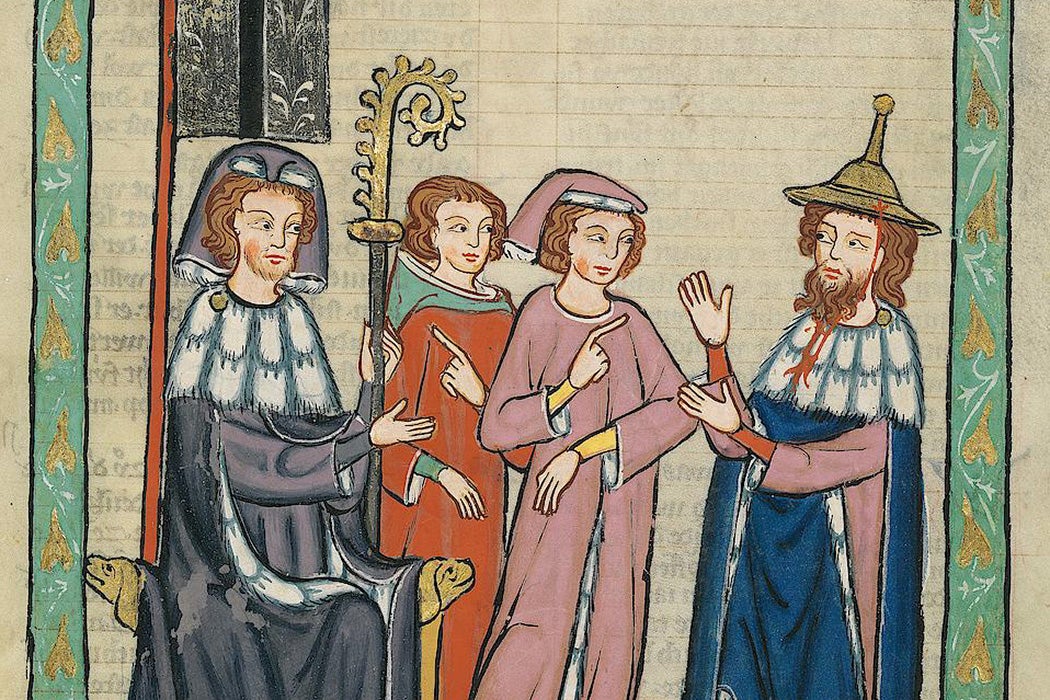What do sorcerers, bishops, and garden gnomes all have in common? One version or another of a pointy hat. As Jewish Studies scholar Naomi Lubrich writes, these hats all share a common story that runs from ancient to modern times, one that is deeply enmeshed in European antisemitism.
Lubrich begins by tracing two ancient traditions of pointy hats. The first is “priestly hats,” which spread from Assyria across Israel, Persia, and Cyprus by the sixth century BCE. The second kind of pointed hat was the Phrygian hat, which was originally identified with “Asians” or “barbarians” in ancient Greece. In ancient Rome, these two traditions merged into the pileus, a conical hat that became a symbol of manumission of slaves, and of freedom more generally.
The pileus emerged again in early medieval depictions of the three magi, used to denote their royal or priestly authority as well as their Eastern origins. Similar hats were, indeed, worn in the medieval Islamic world, and by the twelfth century they had spread to continental Europe and England as a valued and exotic fashion statement.
In this context, Lubrich writes, the first medieval depictions of Jews wearing conical hats—very possibly based in real life—seem to have had positive connotations of eastern elegance. But that changed rapidly when the Crusades stirred up anti-Jewish and anti-Eastern sentiments. Twelfth-century European art shows mobs of Jews in pointed hats capturing and torturing Christ. Also in this era, the miters worn by Christian authorities diverged sharply from the pileus, developing two peaks instead of one.
Starting in the thirteenth century, Christian authorities decreed that Jews must wear distinct clothing. In England this was a badge, but in German-speaking areas it was the pileus, which became known as the Judenhut, or Jewish cap. Historical sources suggest that some Jewish communities may have pushed back against this demand—for example rounding the hats to make them less visibly pointed. But others seem to have attempted to reclaim the hats as a symbol of pride and defiance.
To European Christians, though, the pointed hat became an increasingly reviled symbol, associated not just with Jews but with a variety of criminals and shady figures. Lubrich writes that a late-fourteenth-century law in the town of Seligenstadt forced all usurers, even if they were not Jews—as well as Christian women who had relationships with Jews—to wear them. This practice then spread to men convicted of sorcery, heathenism, and theft in many German-speaking areas.
Weekly Newsletter
Soon, pointed hats became associated with magic and fairytale evil. They appear in early modern German depictions of a baby-eating ogre, the wizard Merlin, and magical dwarfs. In fact, even before Tolkien, dwarfs in folklore wore hats much like Judenhuts and were associated with unsavory behavior attributed to Jews: hoarding treasure, dealing in gemstones, cunning, and untrustworthy.
Today, Hogwarts-style wizards and Disney-fied dwarfs may be considerably tamer creatures, but their hats bear the mark of a darker past.







